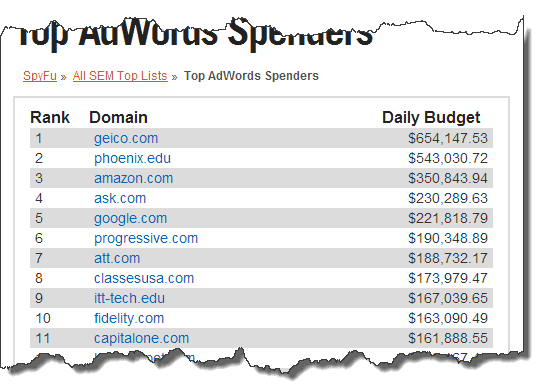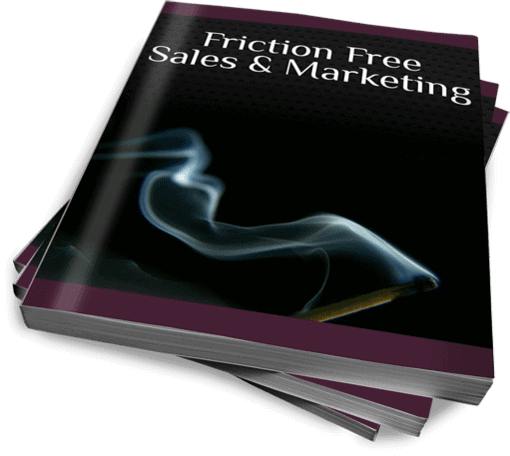

The psychology piece is the sexy stuff. We love learning how our minds work and how it's easily tricked. And, of course, how to use these to influence people.
What may be more important is the math. The math tells you when the sexy psychology works.
Understanding the math will allow you to do things your competitors can't. It will give you flexibility to make better business decisions that can skyrocket your growth.
If you don't think this applies to you, make sure you read to the end. You'll see how critical these numbers can be. You can take an average business to a thriving business.
Don't be scared. The math is easy.
Lifetime Customer Value
The lifetime value of a customer is how much your customer is worth to you over their lifetime.
I used to be an insurance agent. Our average customer would spend at least 6 years with my agency. Some would be more, others less, but the average was at least 6 years. If the average annual income to the agency was $1000 per year, then I knew each customer was worth at least $6000 (6 yrs x $1000 = $6000) over her lifetime.
Now think about your business. How much does the average person spend with you?
Some will buy one item. Some will buy three items. Others will buy everything you offer them. If someone spends $6000 with you over several years, would that be important to know?
If you only sell one product, this might be your kick in the pants to build more products, or find other products to sell, so you can increase the lifetime value of your customer and grow your business.
If you've never done this before, figure out what your average customer spends with you over her lifetime.
In a second I'll show you how this can change the way you do business.
Cost Per Lead
Your cost per lead is how much it costs to put someone on your prospect list.
If you're not building a prospect list you're not building a business.
The least expensive way to start is by building an email list.
Forget Twitter followers, Facebook fans, and Google+ Circles. You don't own your followers on these. And you can't export any way to contact them when things change.
On the other hand, your prospect and customer list is yours. It's an asset. It is the most valuable part of your business and will allow you to generate income even if you lose everything else. Here's an article if you need more reasons to build an email list.
You want to start building an email list that is targeted to your business. (If you're searching for a fully automated email and marketing system, I recommend ActiveCampaign. You could also look into Ontraport or Infusionsoft.)
So, do you know your cost per lead?
It's easy math. If you spend $500 on an ad campaign and you receive 100 leads then your cost per lead is $5 ($500 / 100 leads = $5 per lead).
At the end I'll wrap up how these all work together and how this will allow you to quickly grow your business.
Cost Per Sale
How much does each sale cost to acquire?
If you spend $500, as above, and make 10 new sales. Your cost per sale is $50 ($500 / 10 = $50).
This is different than the lifetime customer value because we're only looking at the cost to obtain this sale.
If you're selling a $100 item you've just made $50 profit. How many $50 bills would you be willing to hand out if you knew it returned a $100 bill each time?
What happens if you're selling a $40 item? You'll lose $10 on this sale. But, if you know your lifetime customer value then that may not be a bad thing.
Here's why.
The Big Picture: Putting The Numbers Together
So, what do these all have to do with each other? Let's use some hypothetical examples (I'm going to keep it simple).
Let's say we have the following scenario:
- Your typical sale is $100.
- Your average customer buys 5 times over the next 2 years. Your average customer lifetime value is $500.
- Your conversion rate for your list is a low 2%. So, for every 50 people on your list 1 person will become a customer.
Now, my questions to you:
- How much would you be willing to pay per lead?
- What's the max you would be willing to pay to acquire a new customer?
It's simple math because you know your numbers.
You could spend up to $500 to acquire 50 targeted leads - up to $10 per lead. This would, on average, equal $500 for each new customer and is the average customer lifetime value.
If that makes you nervous, you can start by keeping your average cost per sale less than your initial $100 sale. In this case you would only be willing to spend $2 per lead ($100 / 50 leads = $2).
Naturally, you want to lower your cost per sale to increase profitability. But, if you're in a competitive environment, you can outspend competitors to buy the market - and squeeze out your competition.
If your competitor can only afford to spend $2 per lead but you're willing to spend up to $10 per lead that will give you more advertising freedom. You can buy ads in places they can't. You can outbid them in the same places they would normally advertise and limit their visibility. Do you get where I'm going with this?
Look at smart direct marketing companies like Geico, University of Phoenix, and Amazon. Their Google Adwords spend are over $300,000 per DAY each! At the time I'm writing this, Geico is spending over $600,000 per day alone. (Data is from SpyFu's Top Adwords Spenders list)


These companies understand the economics of marketing. They're not sitting idly creating content and waiting for people to search for them online. They're not relying on word of mouth. They're not in the boardroom holding group prayers that their video will go viral.
They're buying their markets.
I know Geico is spending more than they'll earn from the initial sale of each new customer. I was in that business and competed against them in my insurance agencies. They could consistently outspend me. Yet, they'll make their money back because of the lifetime customer value.
If you're out to build a business, start tracking these numbers. Instead hoping customers will find you, you'll be able to search them out and target where they play. You'll gain the freedom to grow your business faster and in ways that may not have been possible before.
Create Your Friction Free Sales Machine


Download Your Free Guide To The Psychology Of Resistance and Discover Your Friction Free Sales Machine
By: , follow on Twitter
Post last updated:
Disclosure of Material Connection:
Some links may be "affiliate links." This means if you click on the link and purchase an item, I will receive an affiliate commission. I only recommend products I think are valuable to you. This disclosure is in accordance with the Federal Trade Commission's: "Guides Concerning the Use of Endorsements and Testimonials in Advertising."

